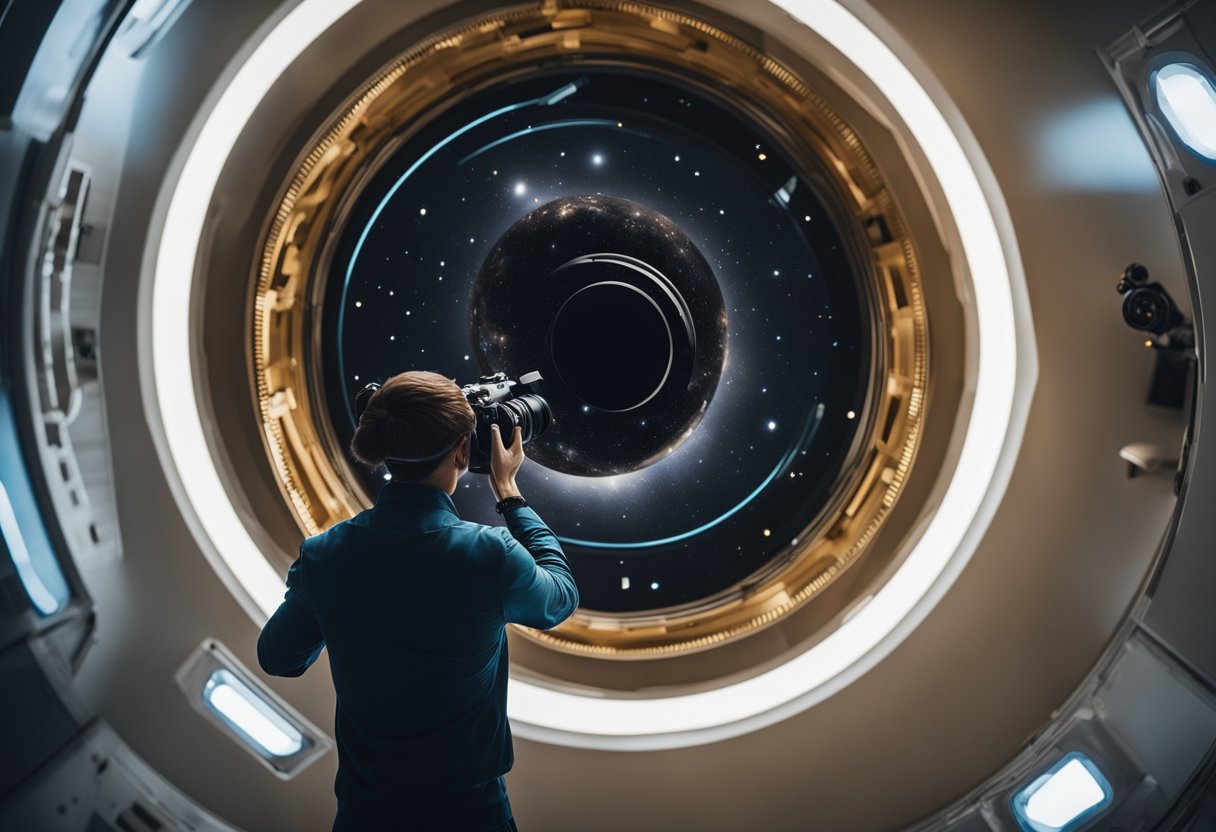
Space tourism photography tours combine the cutting-edge realm of extraterrestrial travel with the artistry of photography, offering an entirely new perspective on capturing images. This niche of space exploration enables us to appreciate our planet from a vantage point previously reserved for astronauts, with a camera in hand. As commercial spaceflight becomes more accessible, courtesy of companies like SpaceX, Blue Origin, and Virgin Galactic, we’re on the cusp of a new era where photography enthusiasts can hope to shoot the curvature of Earth against the vastness of space.
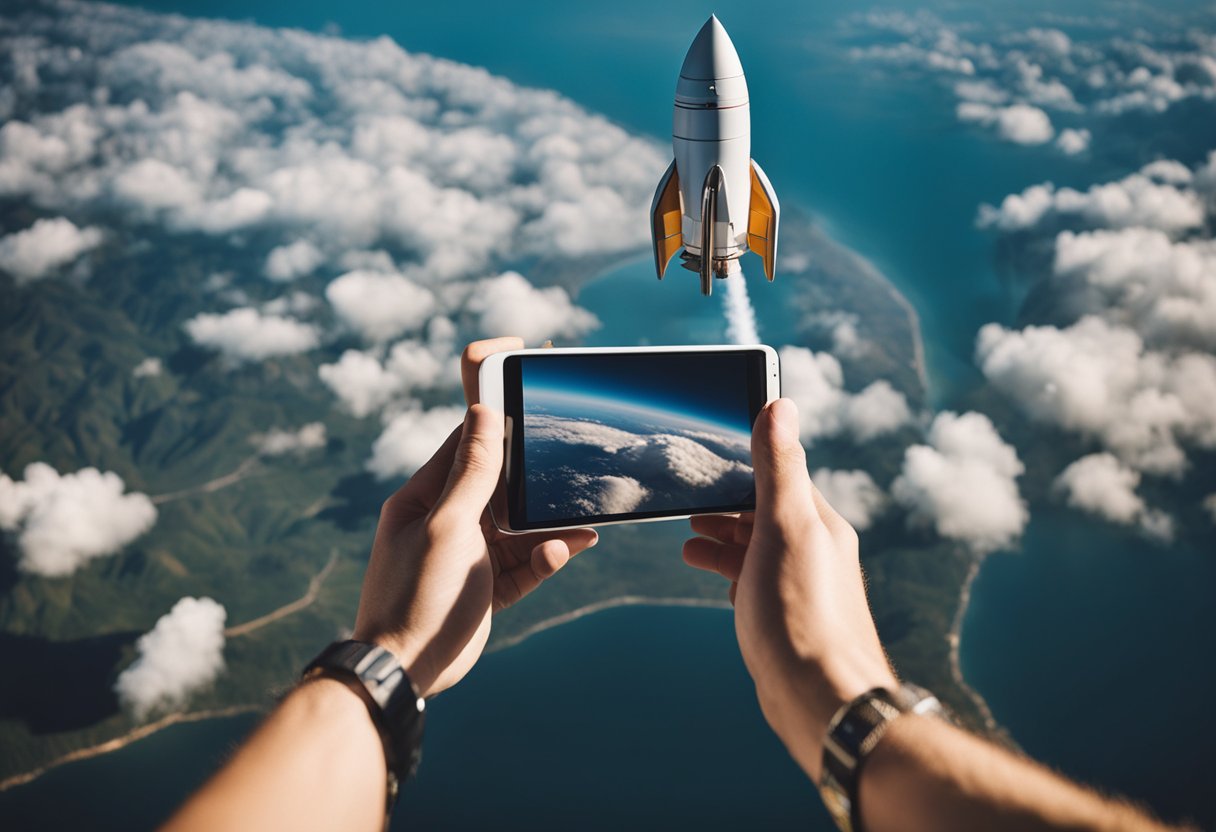
Photographing the cosmos from a spacecraft presents unique challenges and experiences. Beyond the technicalities of space travel, one must consider the intricacies of photographing in a zero-gravity environment. This introduces a range of aspects to master, from securing camera gear in microgravity to adjusting shutter speeds for perfect cosmic shots. Moreover, legal and safety regulations, as well as considerable financial implications, play a critical role in planning these exclusive excursions. Enthusiasts embracing this frontier are also laying the groundwork for future educational outreach, capturing images that can inspire generations to look towards the stars.
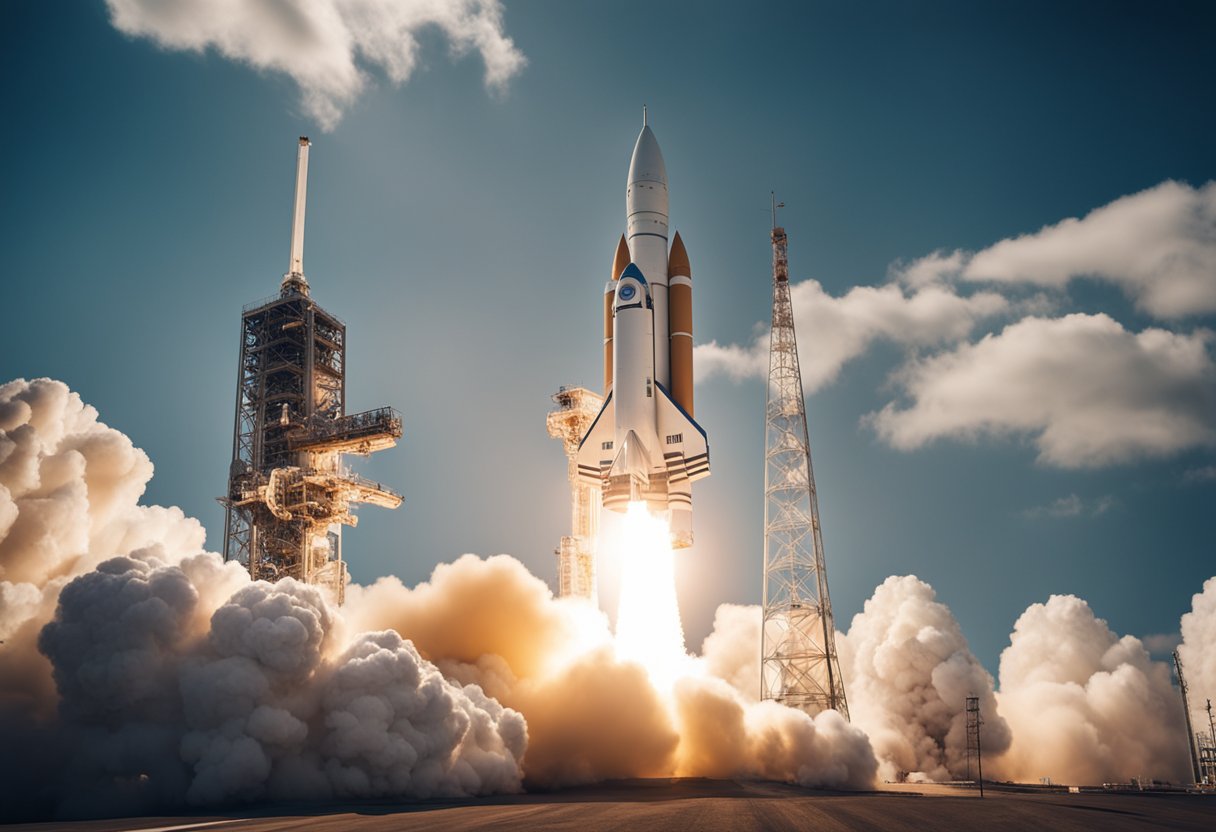
In exploring the history of space tourism, we consider the notable milestones, from the first space tourist to the rise of private companies facilitating access to space.
In 2001, American businessman Dennis Tito became the world’s first recognised space tourist, travelling to the International Space Station (ISS) through an arrangement with Russian space agency Roscosmos. Tito’s eight-day expedition was brokered by the space tourism company Space Adventures.
Initially, the involvement of private individuals in space travel was limited due to the high costs and technological challenges. However, through Space Adventures, a select few have been able to purchase trips to the ISS, orbiting Earth alongside professional astronauts and experiencing the unique environment of space firsthand.
Private companies have played a pivotal role in expanding space tourism. Pioneering firms have been developing suborbital and orbital tourism services, with plans for future photography tours that can capture the magnificence of space. Our website, SpaceVoyageVentures.com, documents the growth of the industry, offering insights into current and upcoming space tourism opportunities.
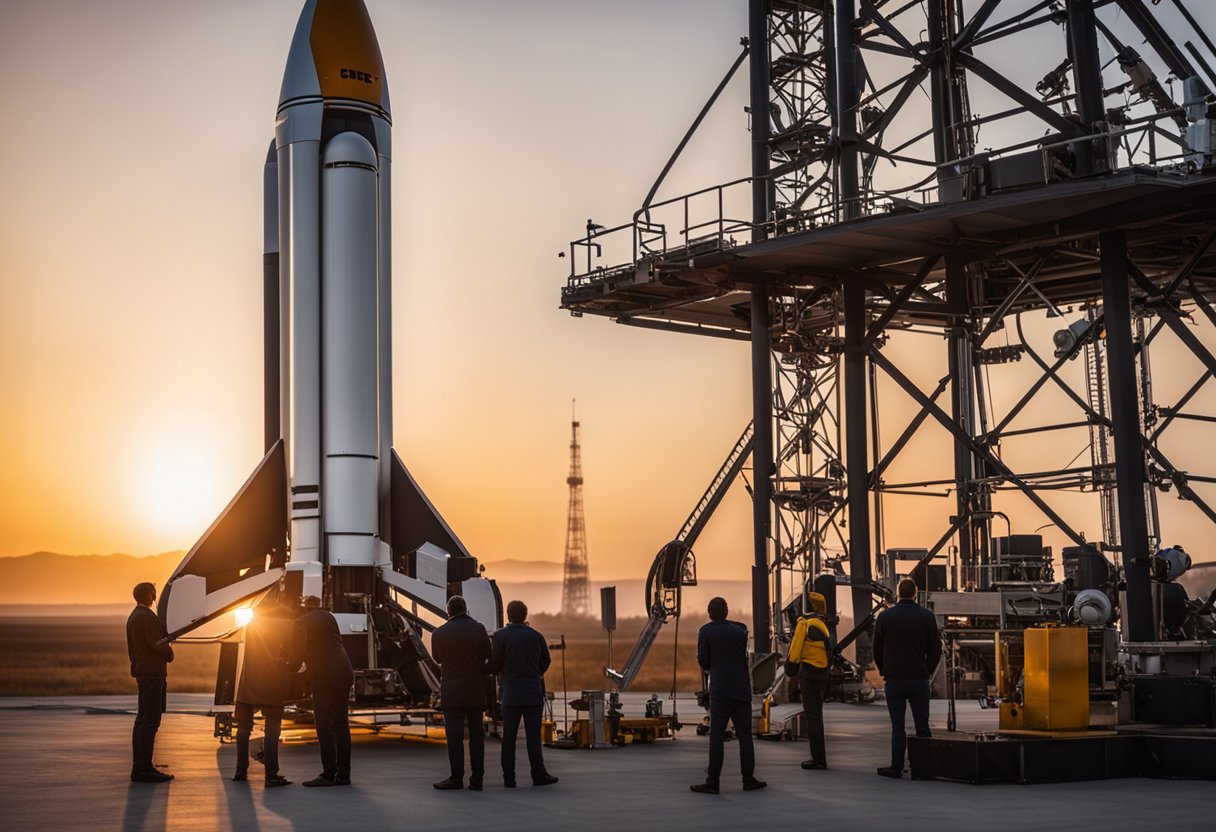
Venturing into space for photography is an unparalleled experience that requires meticulous preparation. We’ll guide you through what’s needed in terms of training and selecting the ideal tour to make the most of your space photography journey.
Embarking on a space tourism adventure necessitates a specific set of training to ensure safety and the ability to operate effectively in a weightless environment. Training for weightlessness is crucial, as it enables us to manage our equipment and ourselves without the effects of gravity. Space tourists must complete a rigorous preparation programme focused on safety procedures, emergency scenarios, and the physical demands of spaceflight.
For photography purposes, we must also familiarise ourselves with capturing images in varying light conditions and movements that are unique to the space environment. Training often includes sessions in simulators or parabolic flights to experience and photograph in simulated weightless conditions.
Selecting the appropriate tour is imperative to fulfilling our aspirations as prospective space photographers. When choosing the right tour, it is essential to consider the itinerary, the level of photography mentorship provided, and the past success of the tour operator in facilitating high-quality space photography experiences.
Current tour options cater to different preferences, ranging from suborbital experiences to longer stays aboard a space station. While reviewing private crew options available through early space tourism platforms like SpaceVoyageVentures.com, we evaluate factors such as the duration of the tour, the reputation of the service provider, and any prior missions they have conducted.
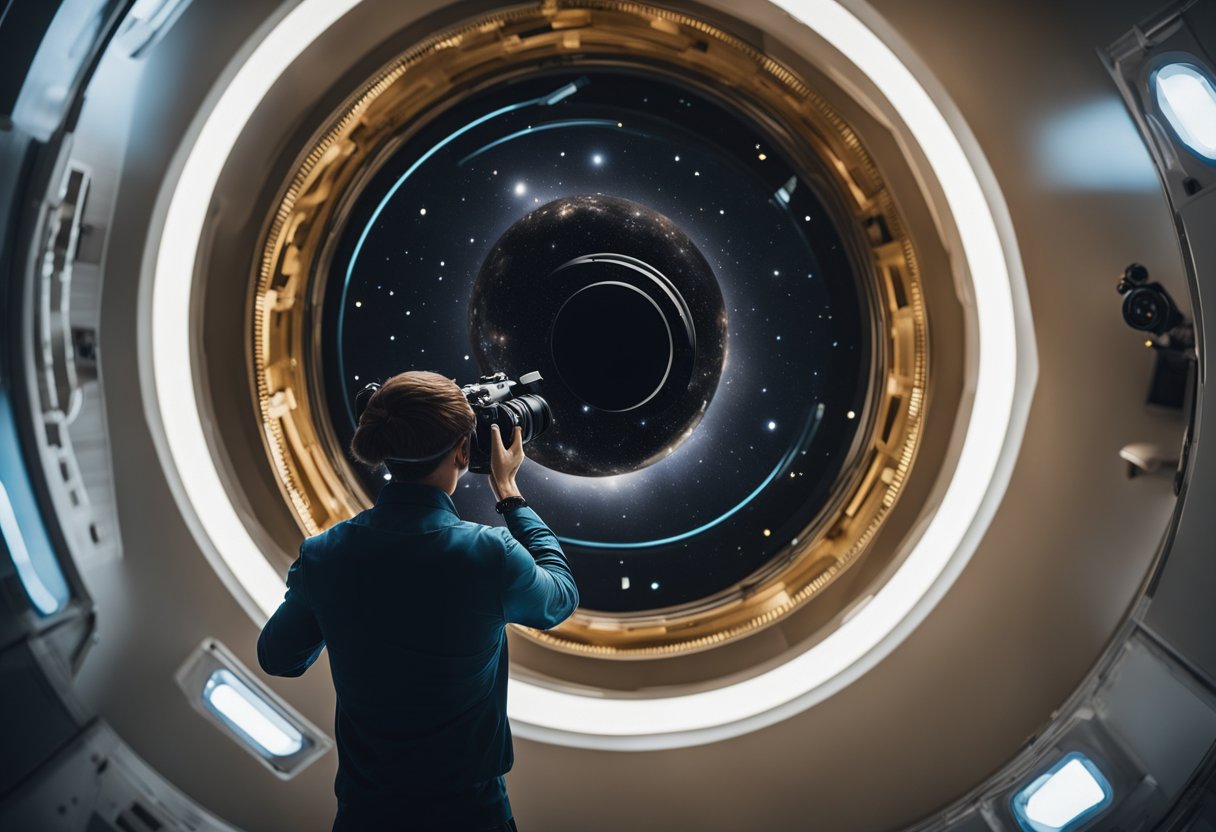
Capturing stunning images in a zero-gravity environment presents unique challenges and thrilling opportunities for photography. We’ll discuss the essential adaptations for camera equipment and techniques required to achieve striking photographs amidst the backdrop of space.
In zero-gravity, the absence of weight can affect the functionality of standard photographic gear. Hence, camera equipment must be modified for use in these conditions. First, cameras often require additional housing to prevent them from floating away and to protect them from the spacecraft’s interior. Secure straps or mounts are vital to keep the camera steady in the absence of gravity.
We’d typically use fasteners and Velcro to attach cameras to our clothing or the walls of the cabin, ensuring they are always within reach. Modifications to battery compartments and memory card slots must be made to allow for easier access when wearing gloves.
Selecting a camera that can be operated easily in confined spaces, with large buttons and simplified menus, is critical. As for ISO settings, higher values may be required within the atmosphere of the craft, where lighting is controlled and might not be optimal for photography.
Adapting traditional photography techniques for a zero-gravity environment is an exciting challenge. Our focus is on stabilisation and composition. Due to the absence of a stable ground or tripod, we need to brace ourselves against the spacecraft’s structure and use our body to minimise camera shake. Achieving a clear focus can be more challenging, thus we use narrower apertures to increase depth of field.
Adjusting the ISO setting can help us compensate for the lower light levels inside the spacecraft. However, we must be wary of potential noise; hence, we aim to find a balance that maintains image clarity. We also experiment with shutter speeds to capture the movement fluidly amidst the backdrop of the Earth and stars, which requires precision to avoid motion blur in the unique conditions of zero-gravity.
By leveraging the unique aspects of a zero-gravity environment, such as the ability to capture imagery from angles and perspectives impossible on Earth, we enhance the aesthetic appeal of our photographs, ensuring that our space tourism photography tours offer unforgettable experiences and breathtaking images. Should you be interested in exploring these tours further, consider visiting SpaceVoyageVentures.com, a pioneering resource in the realm of space tourism.
Exploring the realm of space tourism, we find that photography not only captures the majesty of the cosmos but also the human elements of courage and curiosity. Our gaze turns towards the personal narratives of those who have ventured into the stars, and their views behind the lens.
When speaking of space tourism, a few pioneering individuals stand out—commercial spaceflight’s vanguards like Jeff Bezos, Elon Musk, and Richard Branson. Each has made significant strides in the industry, with their respective companies offering or planning to offer civilian spaceflights. Notably, William Shatner, renowned for his role as Captain Kirk, became a real-life space voyager aboard Blue Origin’s New Shepard. Additionally, Wally Funk, a veteran of the “Mercury 13” programme, finally realised her dream of space travel with the same mission at the age of 82.
Throughout the history of space exploration, professional astronauts have provided intimate perspectives on their experiences. From the otherworldly stillness to the profound impact of seeing Earth from space, their insights are invaluable. Astronaut photography often showcases breathtaking views, and the few tourists who have embarked on these journeys, including through platforms like SpaceVoyageVentures.com, share similar reflections. Their images offer not just a glimpse into the void, but a mirror reflecting our own place within the universe.
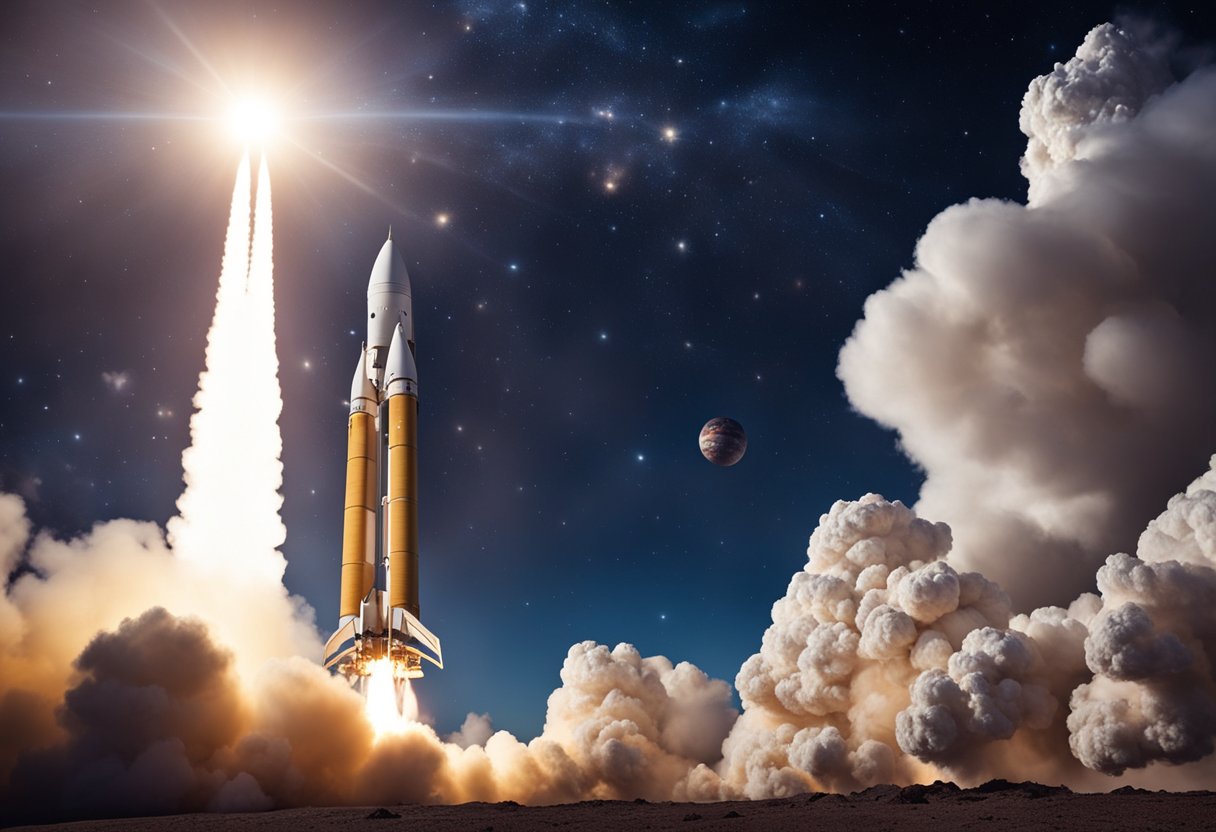
In this essential section, we highlight premier locations and captivating features that define space photography tours.
Our gaze turns first to the International Space Station (ISS), a monumental achievement in space exploration and a focal point for space tourism photography. The ISS orbits our planet at an altitude of approximately 420 kilometres, offering an unparalleled vantage point. Stars and celestial bodies are captured in breathtaking clarity from this position, devoid of Earth’s atmospheric distortion.
Suborbital trips promise astounding opportunities to photograph the curvature of the Earth against the backdrop of space. While these flights are relatively brief, the sights are profoundly striking. Moments when passengers witness phenomena like the Northern Lights (Aurora Borealis) from a suborbital perspective, transcends ordinary experience. Additionally, tours to Dark Sky reserves on Earth prepare guests for the awe-inspiring celestial clarity they will encounter above the atmosphere.

In this section, we’ll explore the vehicles that are making space tourism a reality. We focus on the commercially operational spacecraft today and look ahead to the emerging technologies that may further revolutionise space travel.
Virgin Galactic has developed SpaceShipTwo, a reusable spaceplane designed for suborbital flights. Their vehicles are built with the objective of providing tourists a unique experience, featuring large windows for optimal space viewing. Blue Origin’s New Shepard spacecraft also aims to serve space tourists, offering them the chance to experience a few minutes of weightlessness and witness the curvature of Earth.
SpaceX, while primarily servicing the International Space Station (ISS) with their Crew Dragon spacecraft, has also entered the space tourism sector. They’ve teamed up with Axiom Space to ferry private citizens to the ISS, indicating a strong future in orbital tourism.
Our pursuit of enabling more people to experience space firsthand drives the development of new technologies in the field. SpaceX’s Starship, yet to be operational, is poised to be a game-changer for both interplanetary travel and space tourism. It’s anticipated to significantly increase the capacity and reduce the cost of human spaceflight.
The market for space photography tours is expanding as well, and we can expect a rise in specialised spacecraft to cater to this interest. Innovations in spacecraft design and engineering are crucial for making space tourism a sustainable and frequent endeavour. Our collective efforts as engineers and space aficionados support this objective, and we remain invested in tracking the progress of these emerging technologies.
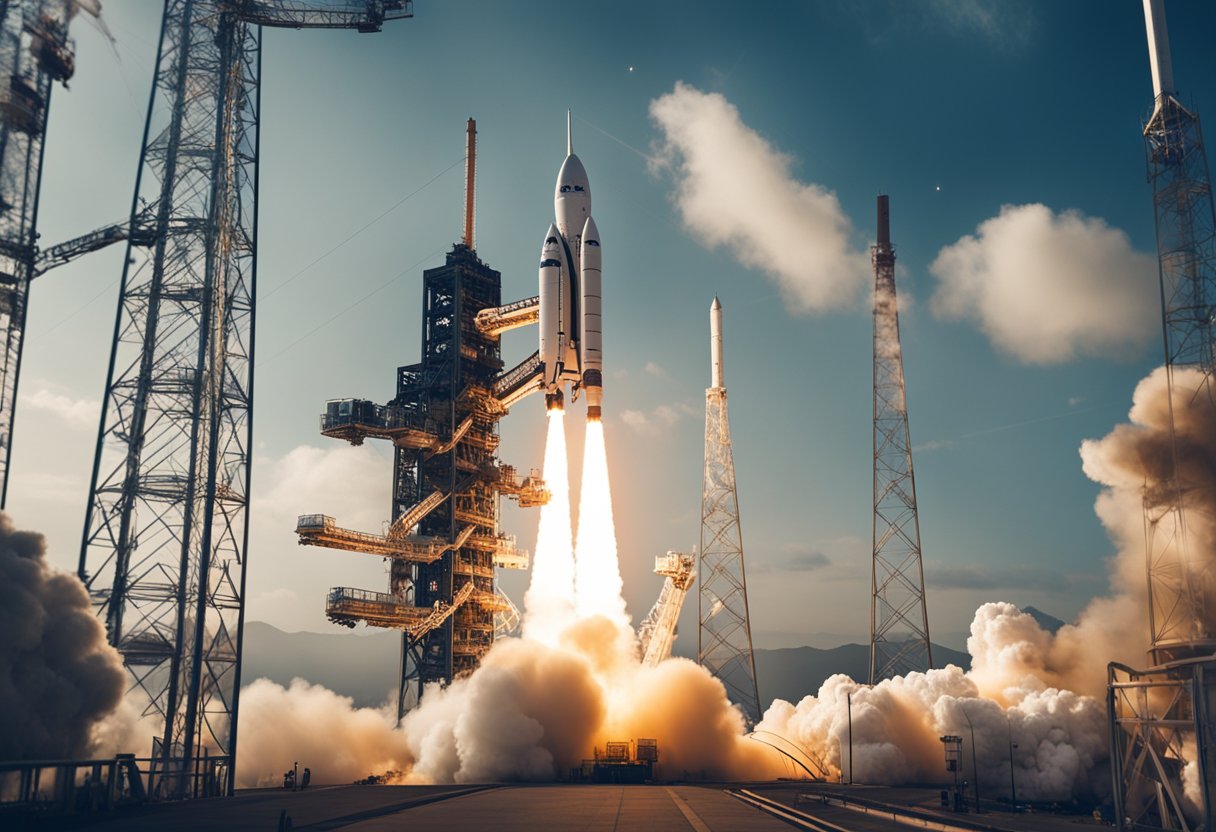
When planning for a venture into the cosmos, it’s imperative that we understand the financial landscape of space tourism, factoring in both the direct costs involved and the potential investment opportunities that come with this burgeoning industry.
Space tourism is an expensive affair, with ticket prices ranging significantly depending on the type of experience offered. Anticipate spending between $200,000 and $300,000 for a suborbital flight, such as those proposed by Blue Origin. For orbital experiences that may include a stay at the International Space Station, costs can soar up to tens of millions of dollars. On SpaceVoyageVentures.com, one can find a catalogue of varying space tourism packages, each with its own unique price point and set of features.
The growth of the space tourism market, estimated to expand at a CAGR of 49.9% from 2024 to 2030, indicates a fertile ground for investment. Investors and businessmen with a keen eye on futuristic industries might see the potential in space tourism, which has opened up avenues for numerous business endeavours. For instance, investing in companies that provide training for space tourists or those developing the necessary technologies for space photography could be promising.
Space tourism is more than just an expensive trip; it is a gateway for investors to become part of an industry on the cusp of exponential growth. Through investment, we can partake in shaping how this industry evolves, ensuring a sustainable and profitable future for all involved. The details on such investments can be explored on SpaceVoyageVentures.com, which delves into different aspects of the available and upcoming space tourism ventures.
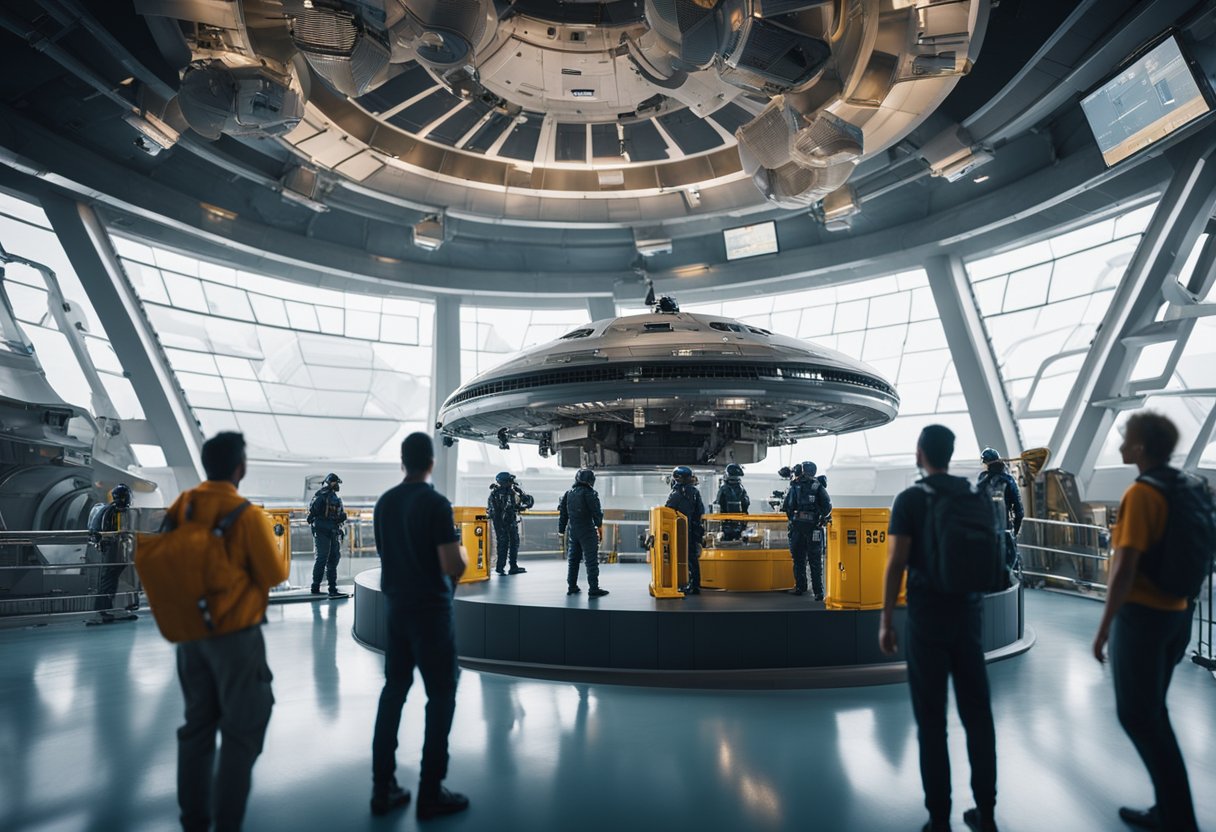
When venturing into the realm of space tourism, we must adhere to stringent legal and safety regulations to ensure the utmost protection for passengers and preservation of the environment. The following are crucial facets of the existing frameworks that govern our cosmic journeys.
The Federal Aviation Administration (FAA) plays a pivotal role in the US by setting the standards for commercial spaceflight. Any company aiming to conduct space tourism operations must secure the necessary licences and permits. Additionally, spacecraft utilised for carrying passengers are required to meet rigorous safety standards. These regulations are essential to protect travellers and ensure industry accountability. For further insights into the FAA’s regulatory impact, please refer to Legal Considerations in Space Tourism: Navigating the Final Frontier.
On the international stage, coordination is key. Space tourism transcends national borders, making it imperative for countries to collaborate and develop shared regulatory frameworks. This international oversight ensures that the industry operates smoothly and safely on a global scale.
Passenger safety is our foremost concern. Therefore, we have established a set of stringent protocols to protect our clients. Each traveller on our photography tours undergoes comprehensive safety briefings, which include emergency procedures and the use of safety equipment. Our spacecraft are engineered with the latest safety features and are subject to exhaustive pre-flight checks.
It is crucial to ensure that space tourists fully comprehend the risks involved. The industry contends that stringent oversight could hinder the progress of space travel companies. Despite this view, we maintain that the implementation of thorough safety measures is non-negotiable.
Our space tourism photography tours at SpaceVoyageVentures.com are designed with these regulations and safety protocols thoroughly integrated. As pioneers in documenting and offering these celestial experiences, we are committed to upholding the highest standards of legal compliance and passenger safety.
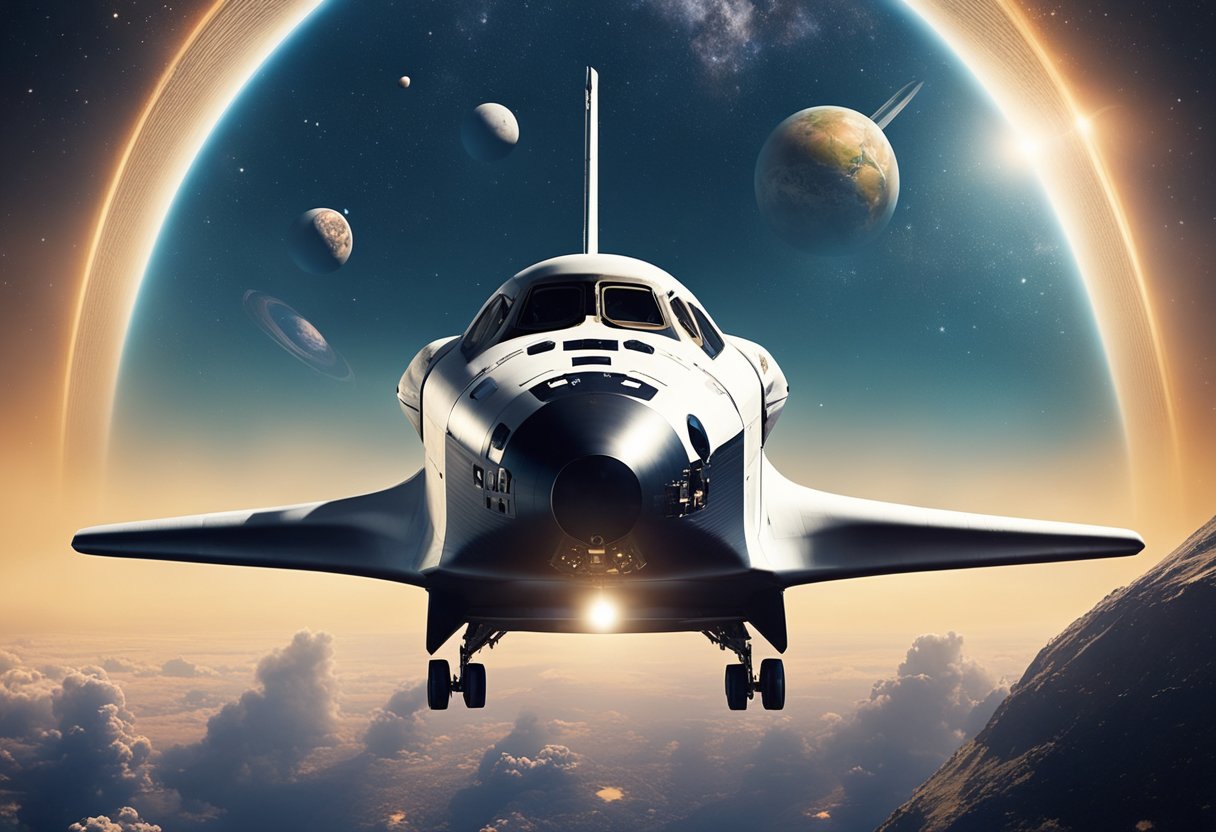
As we gaze into the future of space tourism, we foresee a vibrant industry blending exploration with exhilarating experiences for the public. The interplay between private companies and ambitious ventures suggests a dynamic evolution for tourism beyond Earth.
The emergence of companies focused on space tourism is set to transform the way we think about space travel. Organisations like SpaceX and Blue Origin are pioneering the push towards making off-planet excursions a reality for those outside of traditional astronaut corps. These private companies are working on a variety of spacecraft, each aiming to provide unique experiences for their customers. Just beyond the horizon, ventures such as those documented on SpaceVoyageVentures.com are poised to expand our notions of travelling, by offering photography tours that will allow the public to capture the cosmos like never before.
Looking further ahead, predictions for space tourism suggest considerable growth. The industry could burgeon to a value of several billion dollars as the demand for space-based adventures grows. Increasing affordability and technological advances will likely spur interest and accessibility to broader demographics. We anticipate that this will lead to a significant expansion of the industry. By facilitating public engagement in space exploration, commercial entities will play a crucial role in the enduring evolution of humanity’s relationship with the cosmos.
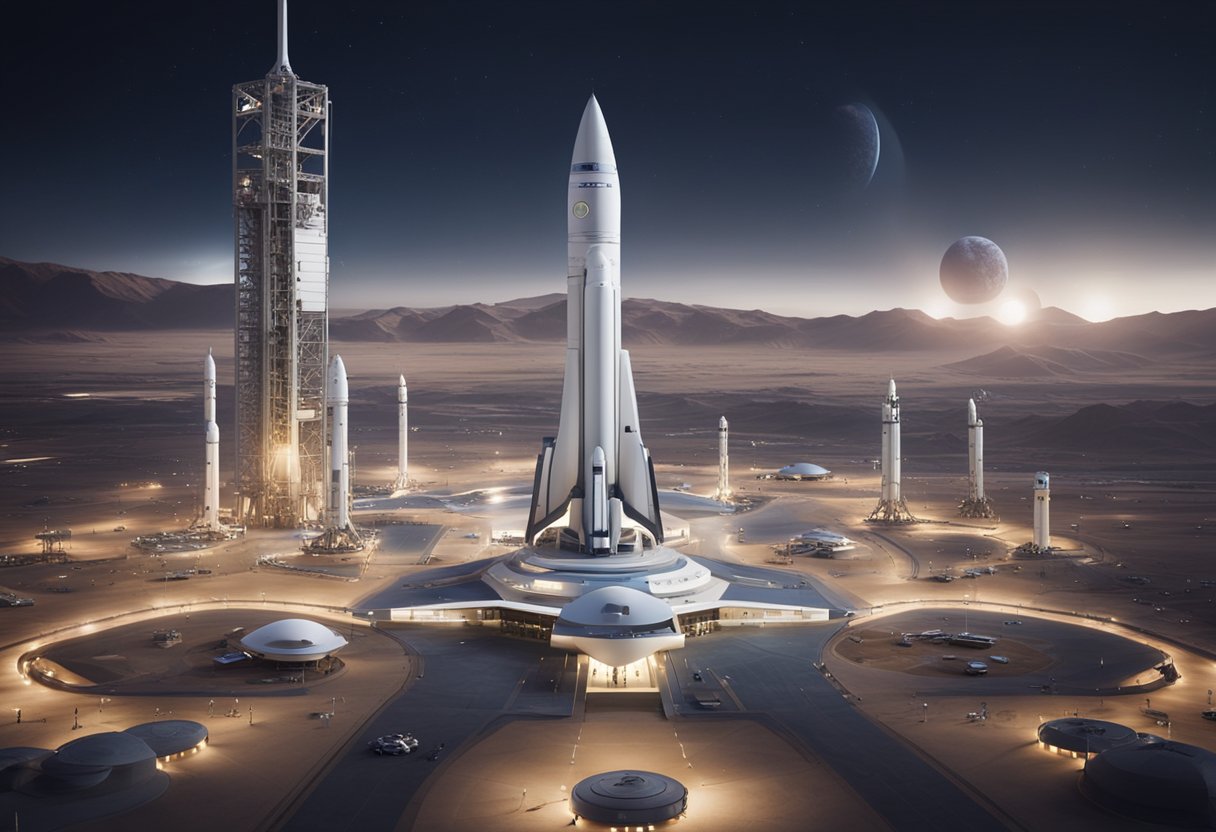
We are witnessing a thrilling era where spaceports play a pivotal role in the burgeoning field of space tourism. These facilities are not mere launch pads; they are the very heart of space travel and exploration, promising to become gateways to the cosmos for both astronauts and tourists alike.
Key Spaceports:
Spaceports are typically situated in remote areas, primarily to ensure safety and optimal conditions for space launches. These locations often have clear skies and wide-open spaces, minimising risks to populated areas.
| Feature | Importance |
|---|---|
| Runways | Essential for landing returnable spacecraft. |
| Launch Pads | Custom-built for different types of spacecraft. |
| Mission Control | The brain of spaceport operations. |
At SpaceVoyageVentures.com, we document the evolution of space tourism, offering a glimpse into the future voyages that may soon be within our reach. From the nascent stages of this industry to the latest advancements in photo tourism space pods, our aim is to provide a comprehensive look at humanity’s next great leap.
Our collective journey to the stars is no longer a distant dream—it’s becoming a tangible reality, thanks to the groundbreaking work happening at spaceports worldwide.
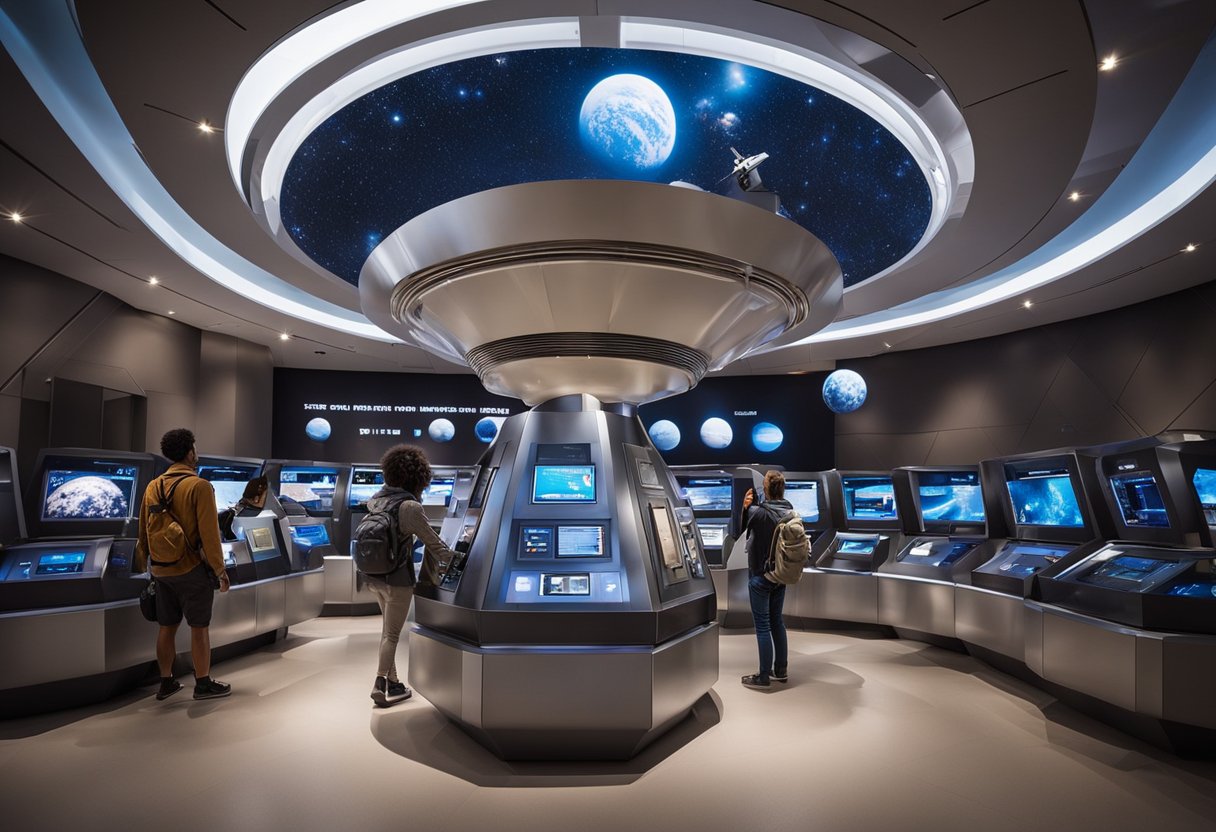
We recognise that space tourism photography tours not only provide breathtaking views but also contribute to educational and outreach programmes. Through initiatives such as the Space for Humanity Campaigns and collaborations with Museums and Public Exhibitions, we’re fostering a greater appreciation for space and its potential impact on education and public engagement.
Space tourism is broadening the horizon for educational campaigns like the Space for Humanity initiative, which seeks to democratise access to space. By sponsoring representatives from diverse backgrounds to participate in space tourism flights, we are able to share these unique experiences far and wide. This includes stories from the Inspiration4 mission, where non-astronaut participants like Jared Isaacman led a largely civilian crew, underlining our commitment to making space more accessible.
We collaborate with museums to bring space tourism photography to the forefront of public exhibitions. These displays serve as a rich source of inspiration and education, enabling the public to glimpse the beauty and potential of space travel. It’s a powerful way of reaching out to curious minds of all ages while highlighting advancements in modern aerospace.
By infusing educational content into each exhibition, we’re connecting visitors to the broader narrative of space exploration, embedding the importance of space tourism in the public consciousness.
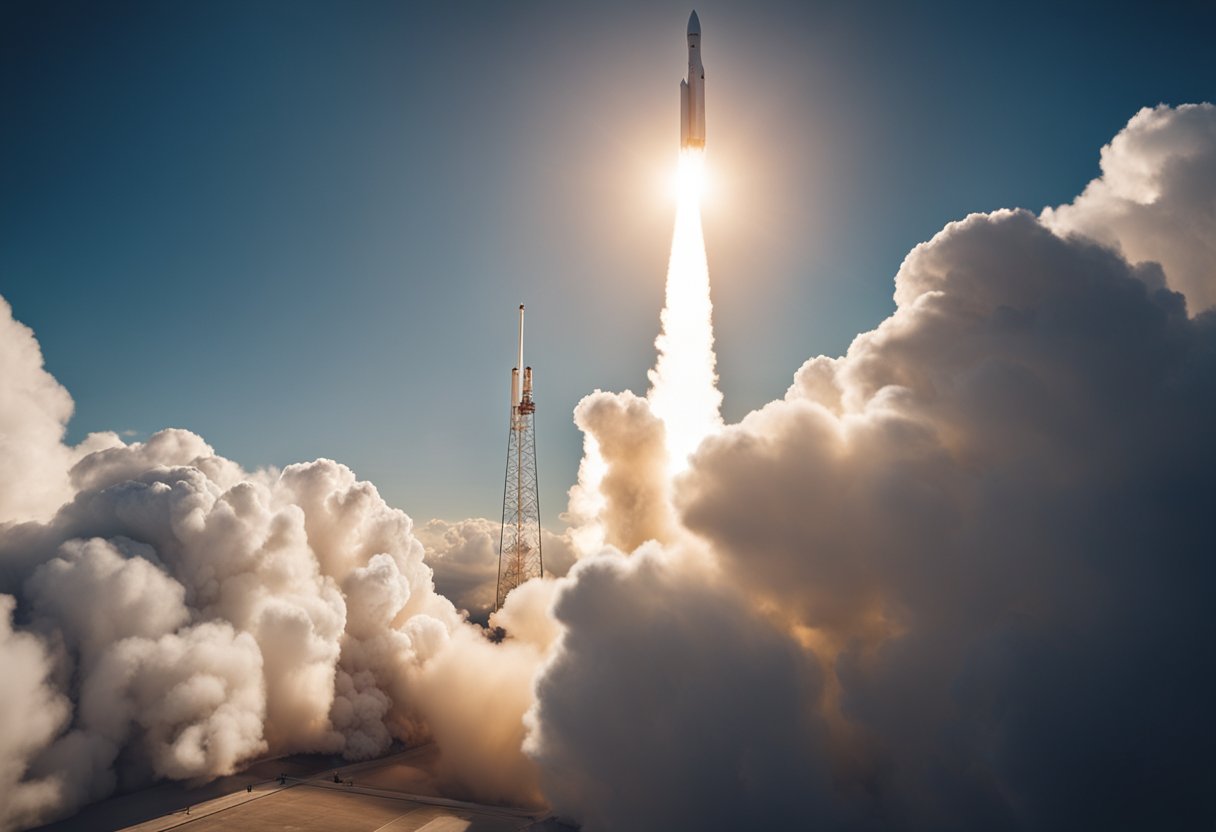
As we delve into the thrilling new era of space tourism, many enthusiasts are eager to capture this experience through a camera lens. Here, we’ve addressed some common queries regarding space tourism photography tours.
The cost for a space tourism photography tour can vary greatly, but currently, it’s an exceptionally high-end experience, with prices ranging from tens to hundreds of millions of dollars, depending on the duration and the provider.
Several pioneering companies, such as SpaceX and Blue Origin, have announced plans to offer space photography tours for civilians. SpaceX’s Crew Dragon offers private missions, and Blue Origin’s New Shepard has been developed for space tourism.
Selecting the best space tourism photography tour involves researching the safety record and credibility of providers. It’s also essential to consider the itinerary, the duration of the tour, and the level of training and support provided.
Space tourism is rapidly evolving, with some providers suggesting possible tours in the near future. For the latest updates, keep an eye on SpaceVoyageVentures.com, which documents current and upcoming opportunities.
Participants of space tourism photography tours need to undergo rigorous physical training, safety preparations, and possibly some photography training to ensure they can capture the experience effectively while in space.
Safety is paramount in space tourism. Prospective providers are subject to stringent safety checks and regulations. However, it is important to remember that space travel inherently carries risk, and companies continue to work on improving safety measures.